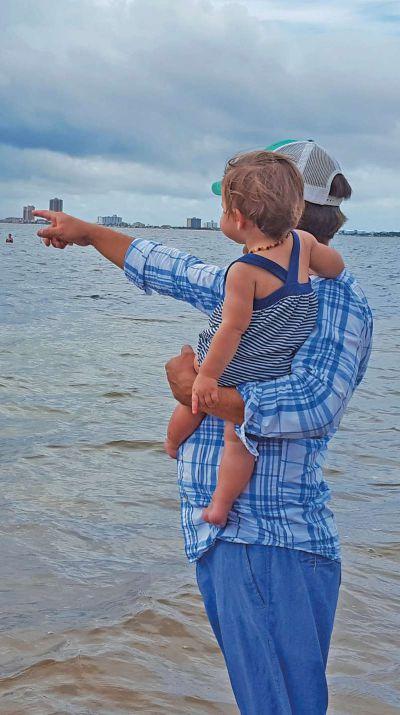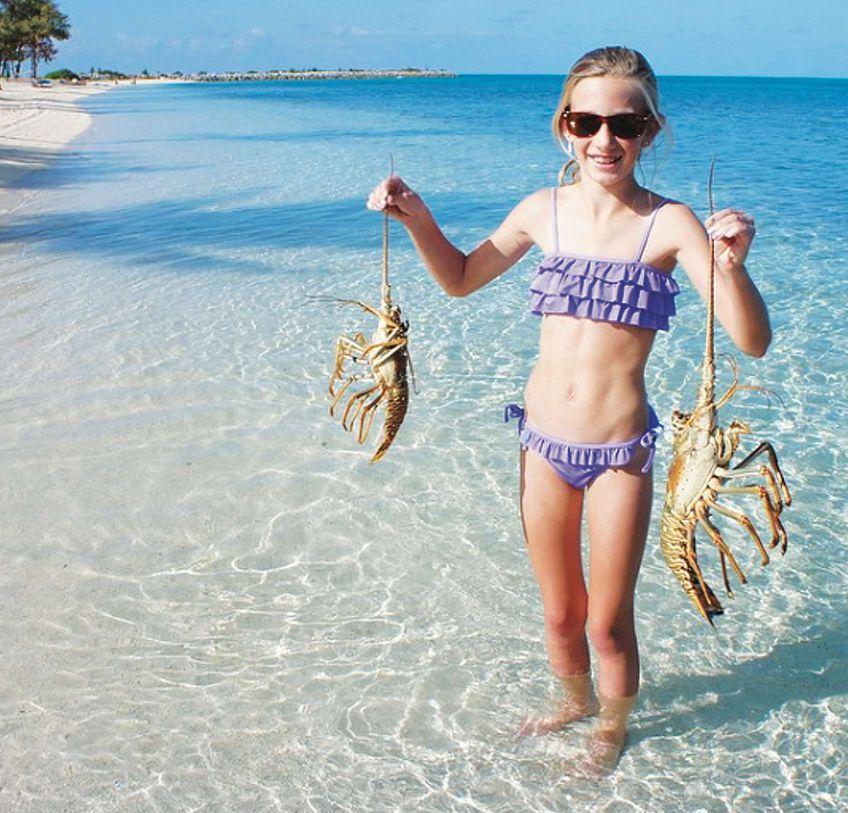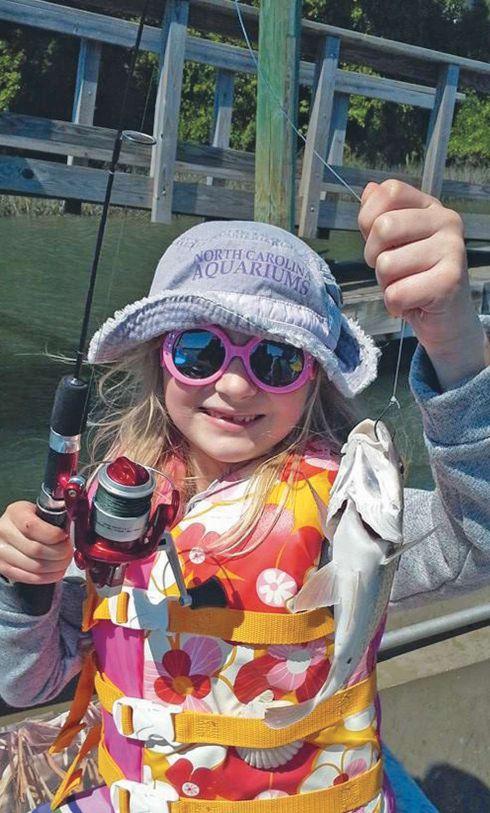
7 minute read
TEACH YOUR CHILDREN WELL
Humans are hardwired to water. We spend our pre-conception lives as totally wet potential in our moms and dads, waiting for the big wave. It comes, and we form inside the first mother ocean, floating for nine months in amniotic fluid. We don’t understand air until the day we’re born. When that day arrives, we are the wettest we will ever be at a whopping 75 percent water.
And that’s excellent news for parents and guardians everywhere who want to raise ocean-loving kids. It’s easy to fight for marine life when you know you started out as one.
It’s also encouraging to know that this basic biological connection to water can also be reinforced by some intentional parenting. According to a growing amount of right-brain research, if a parent shares a love of something with a child in a nurturing and fun way, the child “writes” that love in his or her brain’s neural pathways. You literally can shape your kid’s brain to be ocean-minded.
Many parents start with swim lessons, though according to author and certified swim instructor Cathy Salustri, it’s important to start at the right time.
“Because there’s a physiological memory of being in the womb that young babies have, one of ‘breathing’ amniotic fluid, wait until your child is six months or older when that memory fades,” she says. “The biggest thing you can do for her is teach her to be comfortable in the water. As a child’s motor skills develop, so will her swimming skills—if she’s comfortable in the water.”
Michael Howard, in his essay for the hip parenting blog Fatherly (“A Guy Raising 3 Kids at Sea Explains How to Get Them Comfortable on a Boat”), offers five basic principles to help your children get comfy with Left: Hannah Lucas runs the boat while the family gets in some fishing. Allowing kids to participate wherever they are capable is a great way to build skills and boost their enjoyment on the water. Above, clockwise from left: Infant swim lessons are an excellent way to introduce your kids to the water at a young age. Photo: Stephana Gaudin. For John Metzger, it was never too early to help his daughter take the “long view” about marine habitats. Adia Garth shows off a nice speckled trout caught behind the family’s home.




a sea-worthy life: teach them to love the water, make safety cool, teach them the “real” rules, watch your language and teach your kids as you would a dog— which means lots of positive reinforcement.
Howard’s advice centers around letting kids move at their own pace and Hannah on elite sportfishing boats,” Lucas says. “Now she knows why certain fish having fun, so parents aren’t responsible for getting their kids over fear. Buy your go back in the water and not in the fish box. She is also not impressed at all with children cool-looking PFDs and replace fear-based phrases such as, “Hold on our 18-foot Seacraft. for dear life in this deadly storm,” with verbiage that empowers, such as, “Steer “I’m excited to give her these opportunities. We take her places so she can see through this extreme wind.” with her own eyes what’s at stake. She has legitimate concerns about the health of
Any water activity requires impressing your children with the reality that our local river.” Hannah is nine. “She’s been out there, so she knows what to love. breaking certain rules can result in loss of life. Those are “real rules”. The idea, Such is also the case for John Metzger, an English instructor in Wilmington, again, is not about scaring kids into North Carolina. An avid outdoorsman, safety but about educating them to “Living by the ocean and having Metzger makes the most of life on manage risks. Finally, keep offering the water in his small coastal town. tons of encouragement and your access to rivers, streams and tidal When his daughter Haley came along, efforts will pay off. he took an incremental approach to
Crystal Mills Lucas, who taught marshes, it’s easy to introduce the teaching her about the wonders of high school biology and marine science in Martin County, Florida, ones you love to this environment.” the sea. “Living by the ocean and having knew before she had her daughter that access to rivers, streams and tidal Hannah’s life experiences would revolve around travel and the outdoors. Lucas marshes, it’s easy to introduce the ones you love to this environment,” he says. “I and her husband, Jason, scaled back, saved money, and by the time Hannah was recall Haley’s first real encounter when she was two years old. I took her to Shell four months old, the family was on their way to Mexico. By the time Hannah was Island. We dug for fiddler crabs, and I brought a cast net to show her the wide seven, she had caught marlin and sailfish, seen deforestation in Central America, variety of fish and other creatures living in the backwater. She loved it. snorkeled in the Dry Tortugas and eco-toured the Bahamas. “Jason owns a marine “Haley can now identify almost every species of fish and crab. Soon after carpentry company, so we have these extraordinary trade opportunities to take the trip to Shell Island, she caught her first pinfish on a small rod, and just this



Far left: The Shealy family (Jack, Maria and son Turner) love time in the backwater. Left center: GHM staffer Justin Gaudin shares a view of the bay with his little girl. Left: Sailor Waters displaying her prized catch. Photo: Sydney Waters. Above: Adia Garth holds up dinner at the Old Bahama Bay Club on Grand Bahama and the Metzger’s daughter shows off a choice catch while fishing with the family.
summer she helped fill a cooler with black drum. But the key was starting small and moving from small equipment like dip nets, seine nets, and cast nets to more hook-and-line fishing. She understands what fish eat and how to catch them.”
Kids can absorb information with lightning speed and often shock adults with their ability to identify marine life. “I swear to you,” says Jack Shealy, a fourth generation Florida Gladesman, “my son Turner, who turned four this year, can be in the dark and tell you what kind of fish it was by the way it hit the minnow.”
Jack runs Everglades Adventure Tours and the Trail Lakes Campground in Ochopee, where he teaches Turner the ways of traditional pole-boating. “Turner was in nature before he could talk. We spend a lot of time on the water. Once you establish that, everything else comes second nature. I want them to be protectors of the Everglades. This is our culture; it’s our livelihood. I’m not trying to raise activists or whatever, but they should know they can question things politically because this is our place. One day it will be their livelihood, too.”
When Turner gets older, Jack plans to up the ante, taking him offshore fishing and on extended trips, though he cautions that it’s easy to overdo it with little ones. “You have to work with what they can do,” he says.
For parents with older children, the options for aquatic activities expand considerably. Family snorkeling and scuba diving trips open the door for spearfishing or underwater photography and even filmmaking. And there are plenty of destinations that offer opportunities for family vacations centered around the water. The point is simply to keep the family immersed—literally and metaphorically—in as many ways as possible.
As we age, we dry up, and so do our kids. We’ll all be about half water by the time the Great Wave comes to take us home. In the meantime, we can enjoy knowing we are, as science writer Loren Eiseley noted, “…a way that water has of going about, beyond the reach of rivers.” Or perhaps more pointedly, people are a way the ocean learned to travel. Best to do it together.



